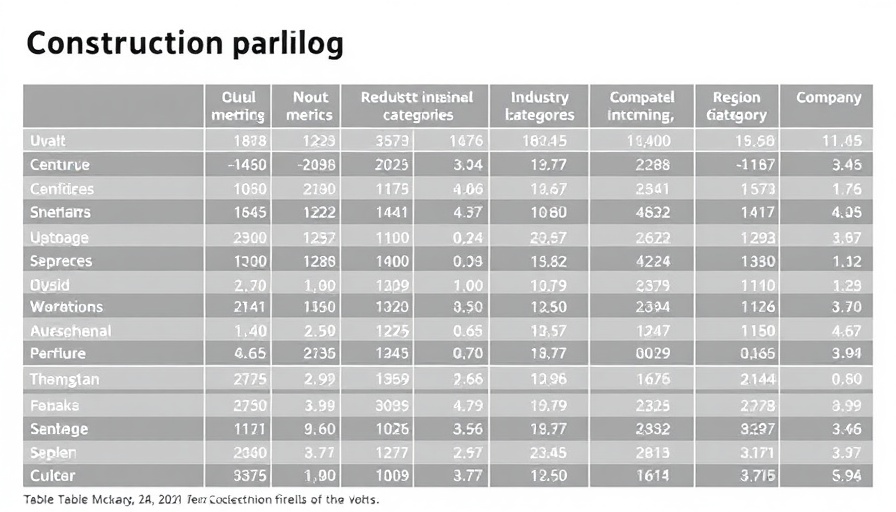
ABC Survey Reveals Construction Backlogs Continue to Shift
The latest survey from the Associated Builders and Contractors (ABC) captures a notable moment for the construction industry, revealing a nuanced landscape. In January 2025, the construction backlog indicator dipped to 8.3 months, down from 8.4 the previous month. While this might signal concern, the optimism among contractors remains stubbornly high.
Understanding the Backlog Dynamics
The decrease in backlog can be seen throughout various size categories among contractors. Smaller contractors, those with revenue below $100 million, have experienced significant drops in backlog. In contrast, larger contractors, particularly those exceeding $100 million, have actually seen backlog increases. This disparity raises important questions about market segmentation and regional performance.
A Beacon of Optimism Amidst Backlogs
Anirban Basu, ABC's chief economist, reported striking optimism within the industry, suggesting that despite fluctuating backlog rates, confidence is climbing. "Nearly 60% of contractors are inclined to expand their staffing levels over the next six months," Basu noted. This sentiment reflects a budding revival in the sector, particularly as contractors anticipate improved economic conditions in the first half of 2025.
The Regional Breakdown: Where Industries Stand
Region-wise, the construction backlog is a mixed picture. States in the South and Northeast have reported increases in backlog, while areas in the West and Middle States have seen significant declines. This trend emphasizes the geographical disparities that influence local markets and should inform strategic planning for contractors in various regions.
Connections to Broader Economic Trends
Complementing these findings, economic signals such as a recent 0.25-point interest rate cut by the Federal Reserve may also boost contractor confidence, according to Construction Dive. As costs of borrowing decrease, there's potential for increased investments and project initiations. Such macroeconomic adjustments could be pivotal in reshaping backlogs positively.
What Does This Mean for Contractors?
As contractors navigate this evolving landscape, understanding these dynamics is essential. Recognizing whether to pivot staffing strategies, adjust project timelines, or innovate service offerings can significantly impact their bottom lines. The findings of the ABC survey suggest a new tactical approach as contractors brace for the next quarter's potential upswing in activity.
Actionable Insights for Home Service Contractors
Given the survey results, contractors should consider evaluating their current staffing models and project management strategies. Engaging in proactive recruitment where previous hires might be uncertain can ensure readiness for increased demand. Additionally, staying abreast of regional trends allows for better alignment with market needs.
Engaging with Homeowners: The Human Element
In this transitional phase, building strong relationships with homeowners becomes even more critical. Transparent communication regarding project rates and timelines can solidify trust. As contractors aim for growth, ensuring quality customer service can differentiate them in the competition.
In conclusion, while the construction backlog may have seen a decline recently, the forecast for the upcoming months remains promising. Contractors should embrace adaptability, prioritize their workforce, and consider strategic opportunities that align with surging homeowner demands. Given these insights, it's a pivotal time to take action and enhance operations in preparation for a rebound.
 Add Row
Add Row  Add
Add 




Write A Comment